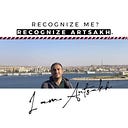Why Artsakh?
According to scholars, inscriptions dating to the Urartian period mention the region under a variety of names: "Ardakh", "Urdekhe", and "Atakhuni". The classical Greek historian Strabo refers to an Armenian region that he calls "Orchistene", which is believed by some to be a Greek version of the old name of Artsakh. According to another hypothesis put by David M. Lang, the professor of Caucasian studies, the ancient name of Artsakh possibly derives from the name of King Artaxias I of Armenia (190–159 BC), founder of the Artaxiad Dynasty and the kingdom of Greater Armenia. The Folk etymology holds that the name is derived from "Ar" (Aran) and "tsakh" (woods, garden) (i.e., the gardens of Aran Sisakean, the first nakharar of northeastern Armenia).
The Early History
Artsakh is home to one of the world’s oldest surviving indigenous Christian populations, though their history predates Christianity by centuries. Its cultural topography, speckled by fortresses overlooking canyons, intricately carved cross-stone monuments with ancient eternity symbols, and centuries-old monasteries with fortified walls serve as a living witness to the enduring existence of the Armenians.
Armenians have existed in Artsakh for over two millennia. In 189 BCE, under the Armenian King Artashes, the region of Nagorno-Karabakh “Artsakh” became one of the 15 provinces of the Kingdom of Armenia.
Two of the 12 apostles (Saints Thaddeus and Bartholomew) were the first evangelizers of the Armenians and were martyred, in the first century CE. Christianity, however, continued to spread throughout the region, from the efforts of St. Gregory the Illuminator — an Armenian-Parthian noble, raised in Cappadocia (present-day Turkey). By roughly 301 CE, King Trdat III made Christianity the official religion of the Kingdom of Armenia, which included Artsakh.
What makes Artsakh a precious region for the Armenian nation?
Sites and monuments
Artsakh has been called an open-sky treasure-house of various forms of Armenian architecture. It hosts several thousand architectural artifacts and historical monuments in a larger sense. Additionally, ecclesiastical structures, this number include samples of civil architecture, ancient castles, and fortresses as well as numerous khachkars. Artsakh’s art in the middle ages was ecclesiastical architecture: churches, cathedrals, chapels, and monasteries. Most other forms of art in that period, including illuminated manuscripts, khachkars -unique Armenian stone slabs with engraved crosses- and mural paintings were likewise tied to Artsakh’s religious life and its primary institution, the Armenian Apostolic Church.
There are several monuments and churches there including The anonymous hermitage of Dadivank, Tigranakert and Ghazanchetsots Cathedral in Shushi.
The importance of Ghazanchetsots Cathedral
One of the famous cathedrals in Artsakh –The conflict area– is Ghazanchetsots Cathedral in Shushi which was extensively restored in the aftermath of the first war and reconsecrated in 1998. During the 2020 war, it was damaged by Azerbaijani attacks, viewed as a “possible war crime” by Human Rights Watch.
This cathedral is characterized by a small circular room hidden behind the altar where you can pray and hear your voice 360 degrees around your body. Additionally, there is a path from it to the Silk Road, which runs through Shushi and on which many old traders had traveled with their caravans to Iran and beyond.
Check https://monumentwatch.org/
Natural Resources
Artsakh is rich in natural resources of precious and semi-precious metals, such as gold and copper, and other natural resources. Copper and gold mining has been advancing since 2002 with the development and launch of operations at the Drmbon deposit. Approximately 27-28 thousand tons (wet weight) of concentrates are produced with an average copper content of 19-21% and gold content of 35-55 g/t. The mine is one of the biggest taxpayers of Artsakh and employs 1200 workers of which 65% are local citizens.
